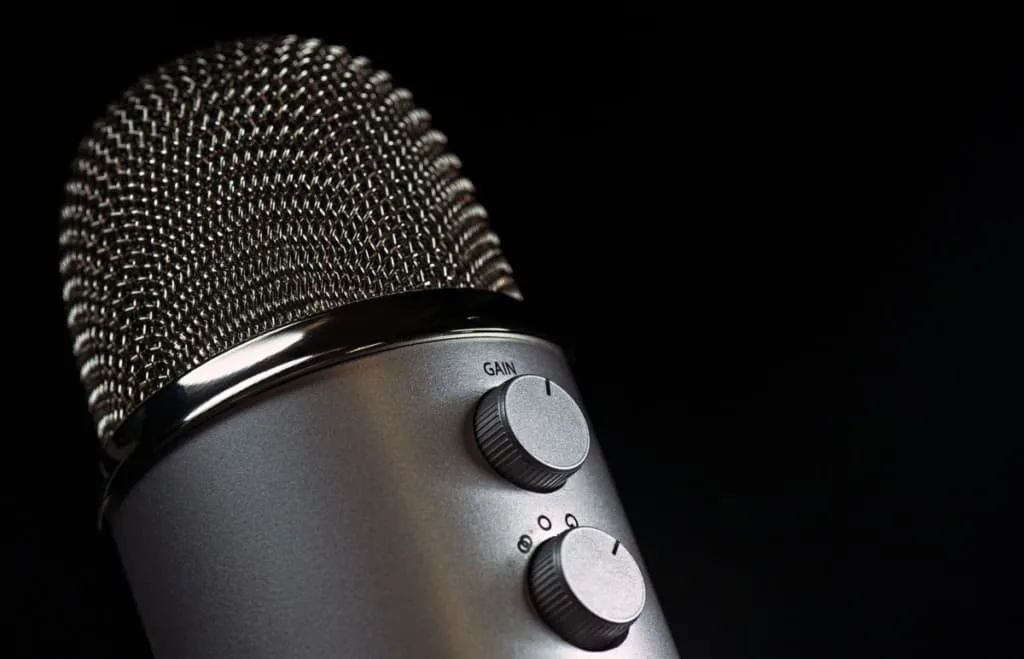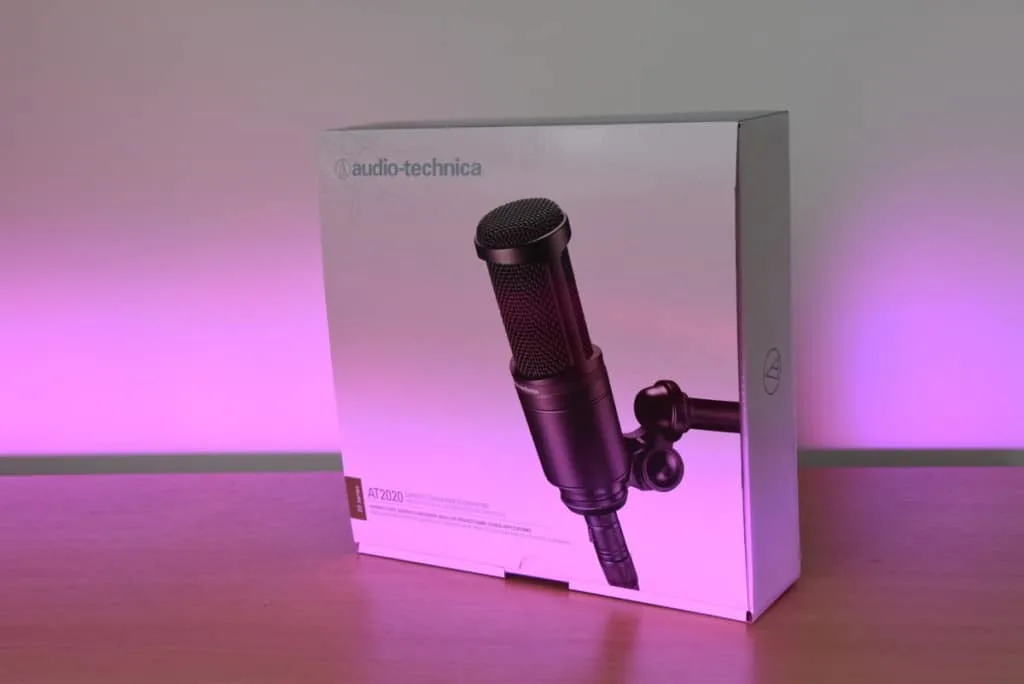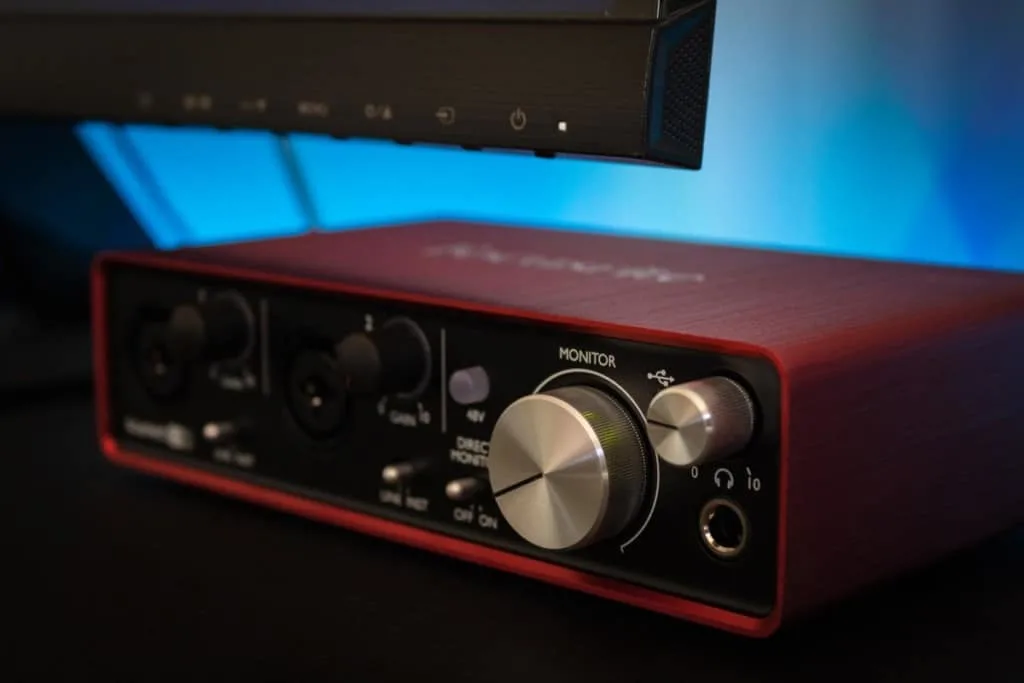USB microphones flooded the market in the past decades. Companies like Behringer, Samson, and even Audio Technica are coming up with their own models.
I am a lucky man who got to work with the best of the analog era and lived through the transition to digital from the inside as a seasoned expert.
So, do USB microphones need phantom power?
A USB microphone does not need phantom power. A USB microphone gets the power it needs from the USB connection within your computer. A USB microphone receives the audio, transforms it internally, and then sends it to the computer using the same cable.
You can think of a USB microphone as a microphone with a built-in audio interface sending zeros and ones straight to your computer.
Let’s look at some scenarios that relate to USB microphones, and what the differences with regular XLR microphones are.
Condenser, Dynamic, USB & Phantom Power Microphones
You must have heard these terms a million times, I’m sure.
Still, not many people are confident in explaining each category. Plus, in this post, we are bringing one more guest: USB-powered microphones.
- The first thing we need to say is that dynamic microphones do not need phantom power.
The construction, and structure that allows them to generate sound do not need any external power source. On the other hand, condenser microphones need voltage to power the internal membrane and generate sound. If you don’t plug a condenser microphone to a phantom power source, it will simply be unable to capture usable sounds.
Let’s take a look at the different scenarios and how each of these microphones can help you out.

Why Choose A Condenser Microphone?
Condenser microphones are everyone’s favorite when it comes to recording vocals, acoustics, or any other sound source that requires a faithful reproduction of the original sound.
With a condenser microphone, you can capture texture and sound nuances. For example, the dynamics and natural harmonic overtones of the human voice, acoustic string instruments like guitars, pianos, and more, sound amazing through a condenser microphone. Furthermore, a condenser microphone is my first choice when I want to record some ambiance to make a take sound even bigger.
On the other hand, condenser microphones are not very good at capturing loud sound sources. For example, a condenser microphone is not the best microphone for a loud guitar amp, a snare, or any other high-volume event.
- Check out the video from the Stampsound youtube channel on this subject here.
You can subscribe to the channel here. It’s free!
Why Choose A Dynamic Microphone?
These microphones are great for capturing louder sources because they have less gain.
Also, because of their construction, the capsule is better isolated and you don’t expose them to any risks putting it in front of your screaming amp.
For example, a Shure SM57 is the quintessential guitar amp microphone.
I came across it everywhere from Capitol Records studios to my buddy’s rehearsal rooms down the block. Also, it is one of my go-to snare microphones, and, don’t tell anyone, but I use it quite a lot on bass amps to capture the edge. This is especially important for players who prefer a pick.
On the other hand, dynamic microphones are not as good on quieter sources that require you to capture nuances and small dynamics.
A good studio trick is, for example, to mix dynamics and condensers when you record an acoustic guitar. If you capture the soundhole with an SM57, point a small-diaphragm to the neck at the twelfth fret, and a large-diaphragm condenser to a room, you’ll achieve a 3-d sound you can almost dive into.

Why Choose A USB Microphone?
USB microphones are perfect for those who are after a very simple endeavor.
For example, several years ago I took a gig for a podcaster in which we had to interview people moving around a lot. It was a lot of fun and very interesting at the same time; I had to set up in five minutes on a bar table, for example.
Our rig was basically a computer with a USB microphone and a cool windshield. It was light enough to fit in a backpack and good enough to use every take in the podcast. I’ve used them in noisy bars, silent studios, and everywhere in between with great results.
If you are interested in pursuing a career in music recording, a USB microphone is a great way to start but it can be very limited with time. It is definitely a one-trick pony that works perfectly for simple endeavors but has a very limited span of action.
USB vs XLR, How Does Phantom Power Work On Them?
Ok, so we started from the very beginning by explaining each category. What is the difference between a USB condenser (like the Behringer C-1U) and a regular XLR condenser (like the Samson C01)?
· 48v vs 5v – Phantom power, as you might know by now works with 48 volts of electric current going straight in through the XLR cable. On the other hand, USB condenser microphones receive only 5 volts of electrical current from the computer through the USB cable. This has a direct effect on the sound, and while XLR condensers with 48 volts sound super round and rich, their USB counterparts sound a little smaller.
· Flexibility – While you can connect your XLR microphone to many different components, there’s only one way of plugging in a USB microphone. This is to say that, for example, you can’t use your microphone for a live performance unless there is a computer involved in the signal flow. I can plug my XLR condenser to a Boss RC-30 and loop non-stop with great sound quality (the looper provides phantom to the mic) but can’t connect a USB condenser to it.
· Monitoring – Some condenser microphones have a 3.5mm jack for a pair of headphones. Some others, like the Audio Technica AT2020 USB, can even allow you to monitor yourself and adjust the level of the sound coming from the computer as well. This is not the case on all units and is a good question to the salesperson because recording vocals with no monitoring is as difficult as it gets.
· Audio quality – A good USB condenser microphone like the AT2020 USB can record up to 16-bits and 48 kHz. These numbers mean “CD-quality” which is great for most sonic endeavors. Now, if you buy the AT2020 (XLR version) from Audio Technica and connect it to an inexpensive USB audio interface like, let’s say, the incredible Scarlett Solo audio interface, you can do 24-bit recordings at 196 kHz.
The difference is huge but is not audible during podcasts, voice-overs, and other simple tasks that don’t require anything above CD-quality audio.
- I have written an article on how to get started using an audio interface such as the Scarlett Solo. You can read it here.
Can You Use USB + XLR?
Now, this is a question I get asked many times.
Most of my students start out with a USB mic and then expand. This is because the simplest, most effective, and cheap way to record audio to the computer at a decent quality is with a USB condenser microphone such as the Audio Technica AT2020 USB.

Once we start moving forward in the classes and they experiment with the audio quality of some of the equipment I have in my studio, their fine-hearing starts demanding more.
Sadly, there’s no way to go back to not hearing the “cheapness” of 16-bit recordings. I often use the learning-how-to-drive metaphor with them. When you’re in the passenger seat and don’t know how to drive you don’t get nervous or upset.
You can use it for some quick drafts, fieldwork, podcasts on the go, and many more scenarios in which simplicity is more important than recording beyond CD quality. So, yes, you can definitely record a band using an 8-channel audio interface at your studio and your friend the saxophone player at his house with a USB condenser that fits in your backpack.
Can You Damage A USB Microphone With Phantom Power?
This is another question I get a lot and the answer is no.
USB microphones can only carry the 5 volts that the connection allows and hence, you can’t send the full 48 volts through a USB cable.
- There is no way you can damage either a dynamic microphone or a USB microphone with phantom power because those 48 volts will never reach the capsule.

Conclusion
Those of us who lived the entire digital revolution from the start had to learn the basics.
I literally spent hours reading about compatibility, precautions, and recommendations for all my digital gear. Then, I went through a phase of experimenting and buying many things I no longer use at the studio.
Such was the case of my USB condenser; I thought it was going to replace my small rig of a Focusrite Scarlett 2i2 and a pair of large-diaphragm condensers but the audio quality was nowhere near what I wanted.
With time, I learned USB microphones work great for podcasts, interviews, and other situations where I had to be fast over perfect. Also, it helps people take their first steps in recording music.
My verdict on the matter is that I would definitely recommend a USB microphone for simple vocal endeavors but not for professional music recording. It is a great starting point, but it is very difficult to integrate it into a bigger, better-sounding rig.
My recommendation would be to start with what you have or choose a simple, good quality USB condenser microphone such as the Audio Technica AT2020 and get connected to your home computer with the least amount of hassle.
Check out the Audio Technica AT2020 here on Amazon.
Also, feel free to check out my article called USB Vs XLR Microphones! You can read it here!
Happy recording!
